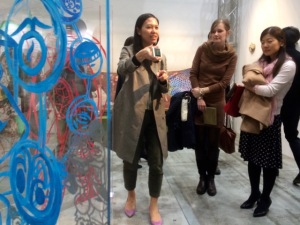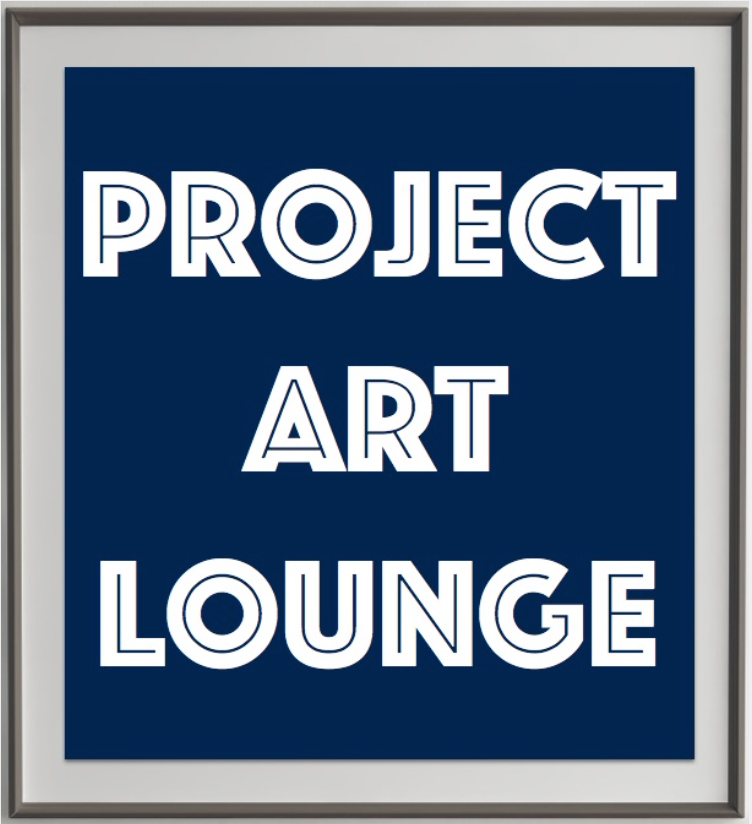Art Fair
White Hype
More than 50 years after the The Beatles double album debuted, artist Rutherford Chang is keeping the White Hype alive with his show “We Buy White Albums”. Chang’s collection of 2,295 copies of the “White Album” will be part of Hyper! A Journey into Art and Music at the Deichtorhallen from March 1 – August 4. If you are in Germany, it’s worth a visit.
That’s 927 more albums than when we last checked in with him in 2017 in Tokyo. If you’d like to listen to his remix and help him grow his collection to over 1000, archiving your copy of the White Album through Chang’s artwork, visit the show or contact him through his instagram page.
Untitled (Miami V.I.P. or Miami Vice?)

There was a mood of introspection at this year’s art week in Miami. Was it a pending sign of the times or a somber foreshadowing of a tragedy still unfolding? While horrific details of the Ghost Ship warehouse fire in Oakland, California were slowly emerging over the weekend, the annual art party in Miami, Florida was in full swing.
Art Basel Miami Beach 2016 stoically went through the motions this year without the usual exuberance of a spoiled art world Jetset. An airplane towing a “Miami Lock and Load” banner circled overhead (Tripadvisor’s #1 activity in the “fun and games” category) while gallery goers discussed with apparent unease the impact of the US elections, fearing perhaps that they and their investments in the art world were now in the crosshairs of bad times to come. Maybe it was a slow realization that that the collector class itself is just part of a disappearing establishment bitterly holding on to a power hierarchy in which they are at the center of the cultural universe. While some gallerists insisted that they were as busy as ever, it just didn’t feel like the posh Art Basel Hongkong or the elegant mothership in Switzerland, which preceded Miami earlier in the year.
Meanwhile, a few blocks away, beach combing fashionistas at SCOPE skirted past the sparsely populated art talks and crowded into the bling filled corridors and flashy art stalls with the helpful herding of zealous gallerists. Eager to please the crowd with “buy now” discounts and promises to undercut the competition, some gallery operators offered the same or similar artworks only a few booths away from each other. Dealers at the other fairs cringed upon hearing of such things. An art space director presenting at one of the other shows in town told me he wouldn’t accept an invitation to Scope even if they offered him a space for free. Such was his assessment of the crowd pleasing antics. That seems a bit of harsh considering that art fairs are commercial enterprises after all. Let’s not forget that Artists can’t live on bread and water alone, and the rent still has to be paid, even if your studio is in a run down warehouse.
Luckily, collector patience was rewarded with a refreshing show at Untitled. Nestled under the silent beats of the Wynwood Radio filled tent, the atmosphere at Untitled was notably more relaxed than at the other fairs. The booths were spacious and well designed and the conversation confident and relaxed. While gallery directors quietly opined about the previous years’ successes, they admitted to enjoying more time this year to engage interested collectors with backstories about the artists and their artworks in the hopes of building new client relationships which will reward them in the future. Together with Design Miami, Untitled offered perhaps the best evidence that the international art world is not just about the art parties.
The weekend ended with a mix of feelings after four days of highs and lows at the Miami art tents. Time will only tell what tide of new and evolving artists will wash up onto art shores in 2017. Despite all of the melancholy of Miami art week, though, one thing is for sure: there is no lacking of exuberance at the beach bars and block parties in Wynwood and on Ocean Drive. One can only pray that the artists living and working out of the warehouses and underground art spaces (as well as their friends and fans) in Miami and elsewhere around the world stay safe in the year ahead. Well heeled hipsters and financiers in the collector class would do well to remind themselves and their friends that it is the labor of these artists’ passion which feeds our intense interest and fascination. If we spent more time ensuring safe spaces for artists to create, we could spend more time enjoying the after party. You can find a list of reputable organizations to support the victims of the Oakland warehouse fire here.
After Art Fair Tokyo – Timing is Everything
 It’s been two weeks since Art Fair Tokyo closed on March 22. Time enough to reflect about the importance of “Japan’s largest art fair” in the contemporary art world. By the fair’s own accounting, this year’s 10th anniversary was a big success, with 55, 000 visitors and 160 exhibitors participating.
It’s been two weeks since Art Fair Tokyo closed on March 22. Time enough to reflect about the importance of “Japan’s largest art fair” in the contemporary art world. By the fair’s own accounting, this year’s 10th anniversary was a big success, with 55, 000 visitors and 160 exhibitors participating.
Art Fair Tokyo came on the heels of Art Basel Hong Kong, which was moved up from May to March. Preview night on March 19th was particularly well attended, with many international visitors. PR & Communications head Yoshiko Nawa admits that the Art Fair Tokyo may have received a welcome boost of international fair goers traveling from Hong Kong to Tokyo.
That being said, Art Fair Tokyo is very different from other prominent art fairs in Asia and around the world. Importantly, it strikes a different balance between contemporary and more classical art forms. Divided into two sections, the larger north wing featured some 90 galleries exhibiting antiques, traditional and modern Japanese art, including contemporary glass and ceramic works representative of the “unique and rich expression techniques in Japan crafts”.
Some exhibitors such as galerie nichido did include a contemporary section in their north wing booth, but when asked about their location, several gallerists said they would prefer to be among their contemporary colleagues located in the south wing of the fair.
The south wing featured some 40 contemporary art galleries, with good examples of what the Japanese contemporary scene has to offer. Aside from some anime and manga-esque art forms which are better suited to Tokyo’s other “popular art fair” Design Festa, Art Fair Tokyo’s focus is more on artworks with international appeal. With the exception of the gallery “waitingroom” and Deutsche Bank’s presentation of works by Venice Biennale’s last Japan representative Koki Tanaka, conceptual art was notably underrepresented at this year’s Art Fair Tokyo. Some Japanese galleries exhibiting in Hong Kong, such as Take Ninagawa and Murakami’s Kaikai Kiki, were also missing at Art Fair Tokyo, suggesting perhaps that the tough logistics of two shows back to back meant choosing one of the other.
 From its inception 10 years ago, Art Fair Tokyo has taken great effort to put contemporary art in historical perspective along side traditional Japanese art. This year’s “Artistic Practices” section was no exception. Rasa Tsuda, Japan media consultant for Ocula and AZITO founder, took members from the expat organization InterNations on a tour of the artistic practices section, featuring examples of “mono-ha” from the 1970s and contemporary renditions of the 17th century Rinpa school under the title “Pop Rimpa / Rimpa Pop. As important as these works are to maintaining the identity of Japanese art, the fair’s continued success in the international art world may depend upon a giving young innovative Japanese galleries and artists a larger voice in the fair’s development.
From its inception 10 years ago, Art Fair Tokyo has taken great effort to put contemporary art in historical perspective along side traditional Japanese art. This year’s “Artistic Practices” section was no exception. Rasa Tsuda, Japan media consultant for Ocula and AZITO founder, took members from the expat organization InterNations on a tour of the artistic practices section, featuring examples of “mono-ha” from the 1970s and contemporary renditions of the 17th century Rinpa school under the title “Pop Rimpa / Rimpa Pop. As important as these works are to maintaining the identity of Japanese art, the fair’s continued success in the international art world may depend upon a giving young innovative Japanese galleries and artists a larger voice in the fair’s development.
As the dust settles after this year’s exhibition, organizers and curators of Art Fair Tokyo will begin to think about next year’s 11th edition of “Japan’s largest art fair.” Among the 16 art fairs every year in March, Tokyo deserves a bigger share of voice. The inclusion of more media arts like the “Senseless Drawings” by YAMAGUCHI Takahiro (a.k.a yang02) is one area where Art Fair Tokyo can develop a unique focus, while representing an important evolution in the Japanese art world. Adding more english speaking tours – like the one offered by Rasa Tsuda – and more english speaking programming for international visitors would certainly help.

